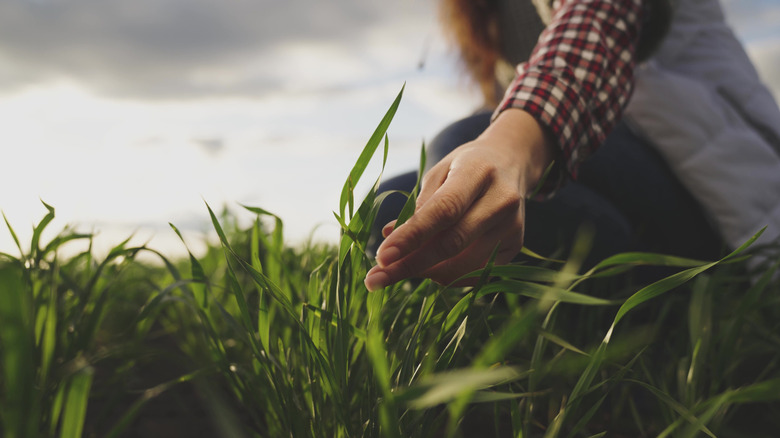New Book Explains Why Rare Foods From Around The World Could Soon Be Gone Forever
If we all looked alike, dressed alike, and had the same interests, the world would be a pretty dull place. We learn from diverse cultures and appreciate regional differences that bring something new to the table. There has been a slow but sure movement to homogenize foods (via TIME), but a new book that explores this reduction in food diversity is set to teach us why twinning isn't always winning.
Macmillan Publishers recently released "Eating to Extinction," a book written by BBC journalist Dan Saladino that is a fascinating and alarming exploration of how the globalization of our food sources has created a crisis of diversity that threatens extinction to many plants and animals. An excerpt from the book in The Guardian reveals the "green revolution," which Britannica defines as a worldwide increase in grain production, is leading us down a dangerous path.
To maximize milk production, one breed of cow was identified as superior to others, and now that breed makes 95% of the milk consumed in the States. Modern conveniences that increase production are beneficial in many ways but are also responsible for a loss of variety.
In his book, Saladino travels the world to discover foods on the brink of extinction and highlights the people making a massive effort to keep those foods on our planet. He explores various regions, the plants and animals that thrive in particular areas, and discusses the importance of preserving diversity in our food chain.
Why saving rare foods from extinction is so important
Dan Saladino explains that growing a small variety of super crops and breeding a select group of animals is akin to putting all our eggs in one basket in his new book "Eating to Extinction," published by Macmillan. His reason for sounding the alarm isn't just because the homogenization of the foods we eat is pushing rare species of plants and animals to extinction, but also because of all the things we stand to lose along with them.
A review of the book in The New York Times discusses how the homogenization of food is causing the cultivation of region-specific plants and animals to dwindle at an alarming rate. As those food sources face extinction, so do the cultural traditions, flavors, and textures that they provide. When it's easier to get certain foods because they're in such high production, we stop using rarer sources and eventually forget the different tastes and textures of foods from different areas.
The irony of the "green revolution" is that it might endanger our food chain as it makes it less resilient overall. It also poses a threat to our health as we become accustomed to a diet that is lacking in variety. "Eating to Extinction" may be a first step in opening eyes to the importance of food diversification.

